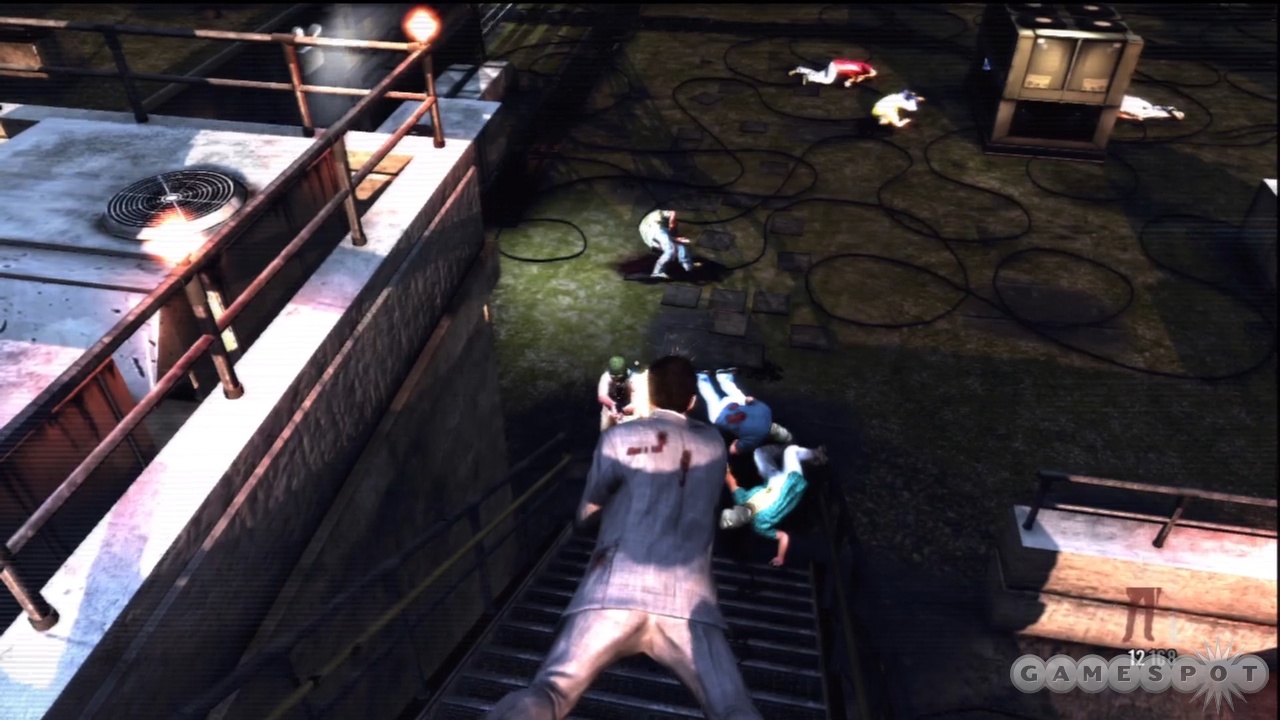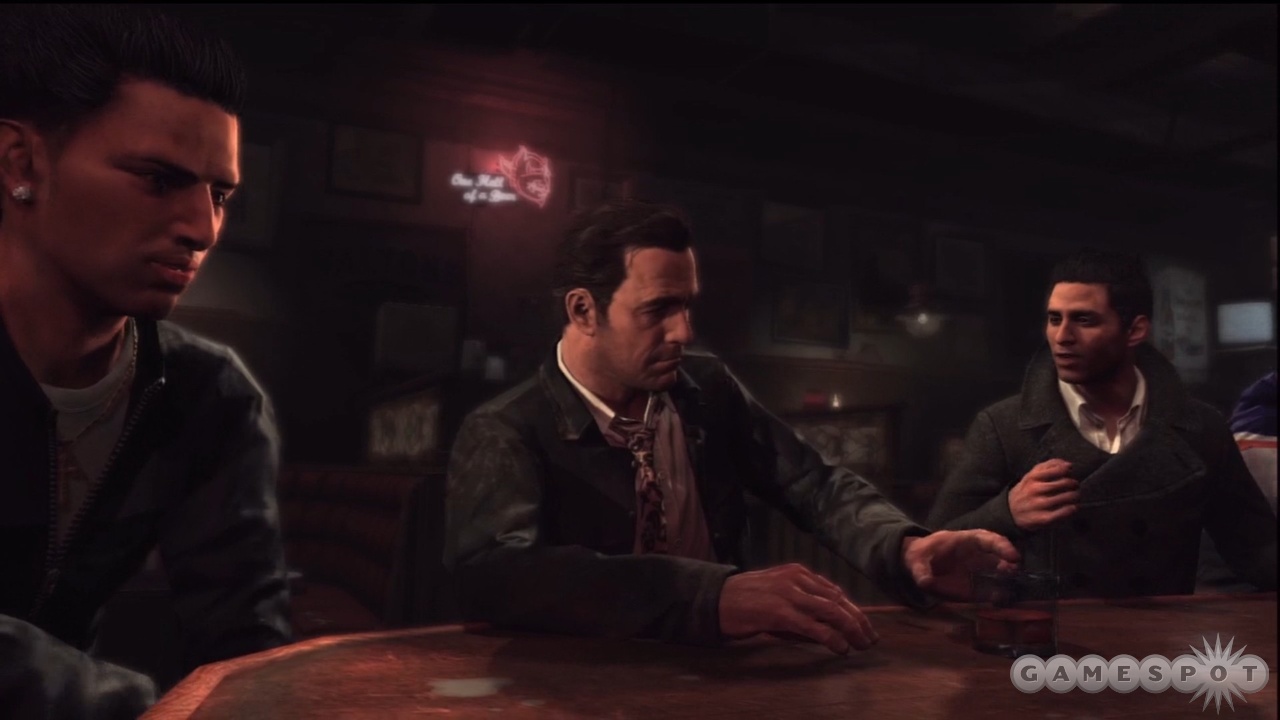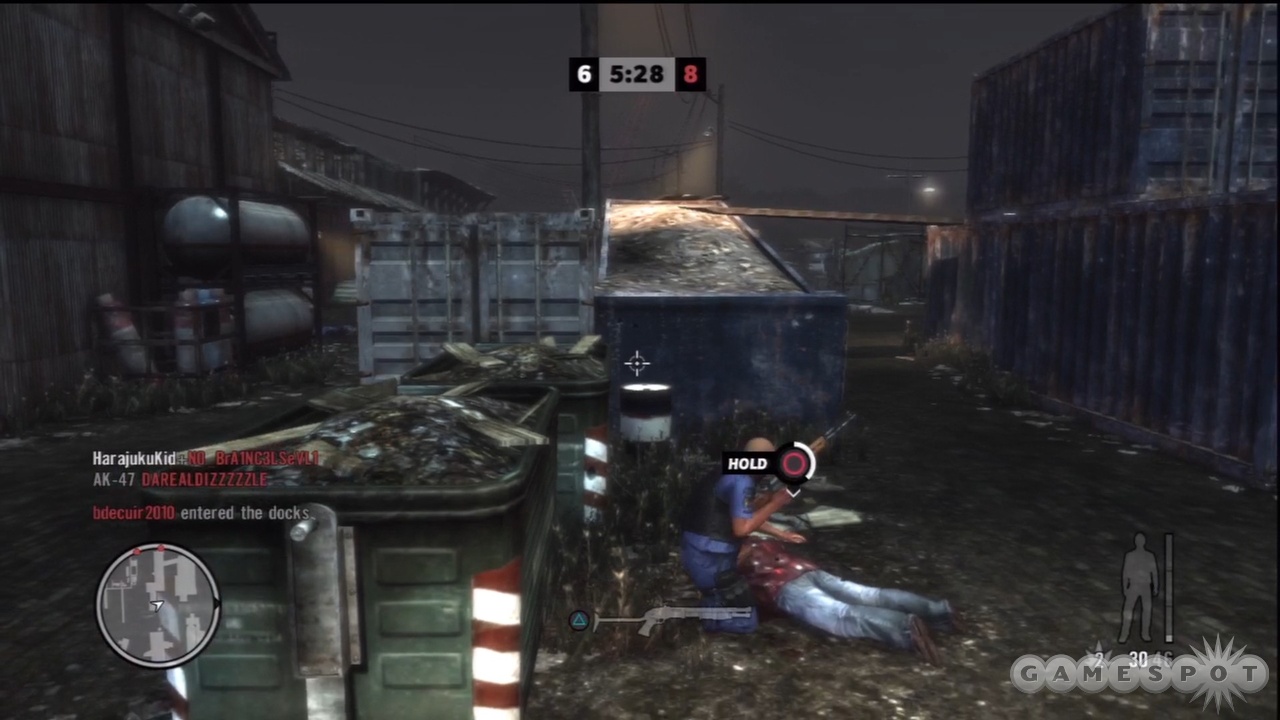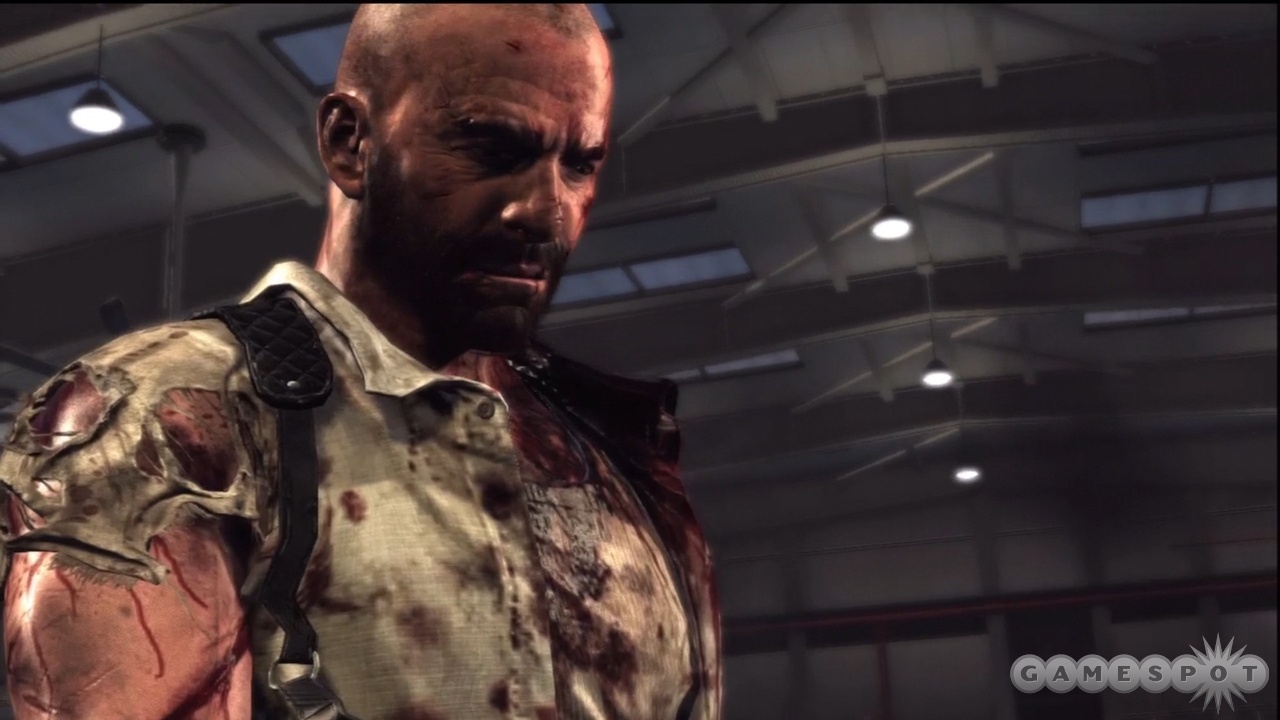Like it or not, times change. When Max Payne last appeared in a game in 2003, he blasted his way through countless enemies with reckless abandon, aided by his signature ability to slow time and deal graceful death. Today, reflecting modern sensibilities and perhaps his own age, Max takes things slower and makes judicious use of a new cover mechanic. Yet the addition of this contemporary element doesn't mean that Max Payne 3 plays like every other third-person shooter. Far from it. With its gripping narrative, brutal violence, and fantastic implementation of Max Payne's bullet-time ability, this is a distinctive and outstanding game through and through, and it's easily a worthy successor to the Max Payne games that preceded it.
Wherever you go, there you are. It's a truth Max Payne knows better than anyone. Fleeing his New York life to take a job working security for a wealthy family in Sao Paulo, the hard-drinkin', pill-poppin' Max finds that his demons come along for the ride. Though the details of the plot add up to your typical story of conspiracy and corruption, of the rich and powerful preying on the poor and helpless to become even more rich and powerful, the writing, acting, and presentation elevate this tale well above a boilerplate video game crime story.
It's hard to stay ambivalent once you see the horrors being suffered by the innocent here, and you'll likely want to see Max's quest for vengeance through to its conclusion just as badly as he does. Max reveals a complexity here not seen in earlier games, as he hits rock bottom and must either stay there or face his demons head-on and make himself anew. Other characters, too, reveal a surprising humanity. You might be tempted to write off Marcelo, the youngest brother in the wealthy Branco dynasty Max is hired to protect, as the shallow playboy he often appears to be. But in moments of disarming honesty, he reveals to Max a depth that lies beneath the facade he presents to the world.
Cutscenes use multiple moving panels to pay homage to the graphic-novel-style storytelling of previous games without feeling beholden to it, and the considered use of blurring and other visual effects echo Max's state of mind, perhaps making you feel as if you're the one who has been hitting the bottle a little too hard. James McCaffrey does an excellent job reprising his role as Max, bringing a wider range of emotions to a character who has previously often been one-note. The writing is terrific; Max's world-weary wit is as bone-dry as ever, and as he ruminates on things like loyalty and loss, much of what he says has the sound of hard-earned wisdom. Subtle touches throughout the game make Max seem convincingly alive, such as the complex look that crosses over his face at the start of one stage when bloodshed seems inevitable; it's as if he dreads what's coming, but does his best to mentally prepare himself for it.

Max Payne 3 has far more sunlight and color than earlier Max Payne games, but the menaces Max faces here are at least as dark as those he's faced before. The locales Max has to gun his way into or out of are alive with authenticity and detail. Nightclubs throb with dance music and light shows; children play soccer in the favelas; run-down hotels are packed with leftover junk from their earlier days of luxury. And it's not all tropical locations and bad Hawaiian shirts for Max Payne here; a few great flashbacks that take place in Hoboken, New Jersey, reflect the snowy weather and urban atmosphere of earlier Max Payne games, as well as Max's previous fashion sensibilities, and connect his new life with his old one.
Though some things may have changed for Max Payne, one thing that hasn't changed is his ability to blow bad guys away by the hundreds. Three aiming options for the campaign let you customize the gunplay to your liking: hard lock takes much of the challenge out of things, snapping on to the nearest enemy; soft lock sticks to enemies once you've got them in your sights; and free aim leaves it all up to you. Regardless of the option you choose, shooting in Max Payne 3 feels terrific. This is partially due to the game's unflinching violence. Bullets visibly tear through bodies, leaving holes that spurt blood as your enemies die. Each encounter with a group of enemies ends with a bullet cam, showing your final, fatal bullet soaring through the air and striking its target in grisly detail, and giving you the option to pump excessive, unnecessary ordnance into the poor bastard. It's a cathartic and satisfying way to end each firefight.
Bullet time, the defining mechanic of the Max Payne series, lends gunplay a cinematic intensity that remains exhilarating from the start of the substantial campaign until its finish some 12 hours or so later. When bullet time is enabled, you can see every pellet that bursts forth from a shotgun, every bullet that whizzes past your head. Windows break apart beautifully; concrete shatters to reveal the rebar underneath; and all other sorts of believable destruction to the world around you takes place as you and your enemies try to gun each other down.

Bullet time slows your enemies down significantly, letting you aim and fire faster than they can respond. But despite the significant edge this gives you over your foes, they are no pushovers. They make smart use of flanking tactics, so you need to stay aware of what's happening on all sides, and, yes, you need to make effective use of cover. There are still situations aplenty where an old-fashioned head-on approach can get the job done, but by and large, you need to approach combat in Max Payne 3 a bit more defensively than in past games.
Max's vulnerability, and the feeling of danger that accompanies it, makes combat much more nerve-racking than it was in earlier Max Payne games, but it does come with a downside: Max's signature shootdodge has suffered. You can still leap through the air in slow motion like a John Woo action hero, attempting to blow your foes away before you land, but because your enemies also make good use of cover, there's a good chance some of them won't be vulnerable to your airborne assault, and as you get up from the ground after a shootdodge, you're something of a sitting duck. The result is that you may end up using shootdodge from time to time not because it's a particularly effective tactic but because, risks be damned, it just looks so cool.
There's a great variety of guns to use in Max Payne 3--all manner of pistols, shotguns, rifles, and submachine guns. Max can still dual-wield weapons but, in a great touch, any larger weapon you grab is carried in his left hand, and if you opt to dual-wield your smaller weapons, he has to drop the bigger gun. (After all, where is he going to put it?) Max also has a number of terrific, hard-hitting melee attacks at his disposal, which knock enemies helplessly to the ground and then let you fill them full of lead. Great sound design supports the impact of the action. Gunfire sounds as fierce and deadly as it looks, and simmering percussion comes to the forefront in battle, a fitting accompaniment to your escalating pulse.
The campaign deftly avoids falling into a rut by frequently putting you in situations that fall outside the standard action. You might find yourself blasting enemies in bullet time as you hang from a helicopter, sliding down a sloped roof into a swimming pool, or in any number of other action movie situations. The campaign also includes just enough periods where you get to catch your breath and simply walk from one place to the next, taking in your vibrant surroundings before the next firefight begins. Optional clues you can search for and collect throughout each level give you an added incentive to look around and give you the sense that Max is good at more than just killing, that he has the instincts of a detective. It all adds up to an immensely exciting, expertly paced campaign that's lengthy enough and varied enough to leave you satisfied.
Where the campaign is tight and focused, the multiplayer is fast, freewheeling, and a little goofy. Though you start with just a handful of loadouts to choose from, you eventually unlock an impressive variety of weapons, attachments, gear, and abilities, called bursts, to choose from. Unlike in the campaign, in which Max fills up his bullet-time meter rather quickly on the standard difficulty, the adrenaline that fills up your burst meter in multiplayer takes time to collect, ensuring that these powers are not overused, and requiring you to choose carefully: Do you cash in your trigger-happy burst at level 1, enjoying the benefit of armor-piercing ammunition for 20 seconds, or do you hold off until you have a full meter and reward yourself with a devastating grenade launcher?
Bullet time is one of the available bursts in multiplayer, and it works well, affecting enemies in your line of sight rather than slowing down enemies all over the battlefield. But it's not the only standout burst. Paranoia is great for causing mayhem on the field, making members of the enemy team see each other as enemies. And big dog, which gives you and your teammates a health boost, can help turn the tables when things are looking grim.

There are standard deathmatch and team deathmatch games, but Payne Killer and Gang Wars are much more interesting. In Payne Killer, you become Max Payne or his partner Passos by killing them, and then earn points for staying alive and killing the attacking players as long as possible. Your bullet-time bursts and life-restoring painkillers give you an edge over your opposition for a little while, but you're heavily outnumbered in these roles, and it's only a matter of time before you're overwhelmed.
Gang Wars is a five-round team game in which objectives vary from round to round. In one round, your team might need to plant bombs at sites that the other team is struggling to protect; in another, there might be a VIP you need to kill on the other team, whose identity and location are revealed only after you kill a certain number of other members of the team. The frequently changing objectives and the uncertainty of what's next make Gang Wars an exciting mode that keeps you on your toes.
In the context of the campaign, shootdodging typically looks like a stylish way to kill people. In multiplayer, however, you might see people belly flop gracelessly onto the ground, which can make things a bit comical. The action is wilder in multiplayer than in the campaign, as players scramble to kill each other, using their various bursts to aid their team or to wreak havoc on their opponents. It's all chaotic fun, and the option to start vendettas against players who have killed you twice in a row, which earns you more experience points for the next kill if you get them before they get you, brings a dynamic and personal aspect to the competition as you're often trying to seek out and kill one player in particular.

But while the multiplayer is enjoyable, the single-player campaign is a knockout. There's incentive to return to the campaign and conquer it on higher difficulty levels, or to tackle the leaderboards in Arcade mode and in New York Minute mode, in which you race through levels, earning time for each kill. Times change and people change, too; Max Payne isn't the same man by the end of this game that he is at the beginning. It's fitting, then, that the gameplay has also evolved, that Max needs to proceed with a bit more caution than he did in his younger days. They say the more things change, the more they stay the same, and one thing remains true: you can still count on the Max Payne name to deliver some of the most stylish, distinctive, pulse-pounding shooting around.